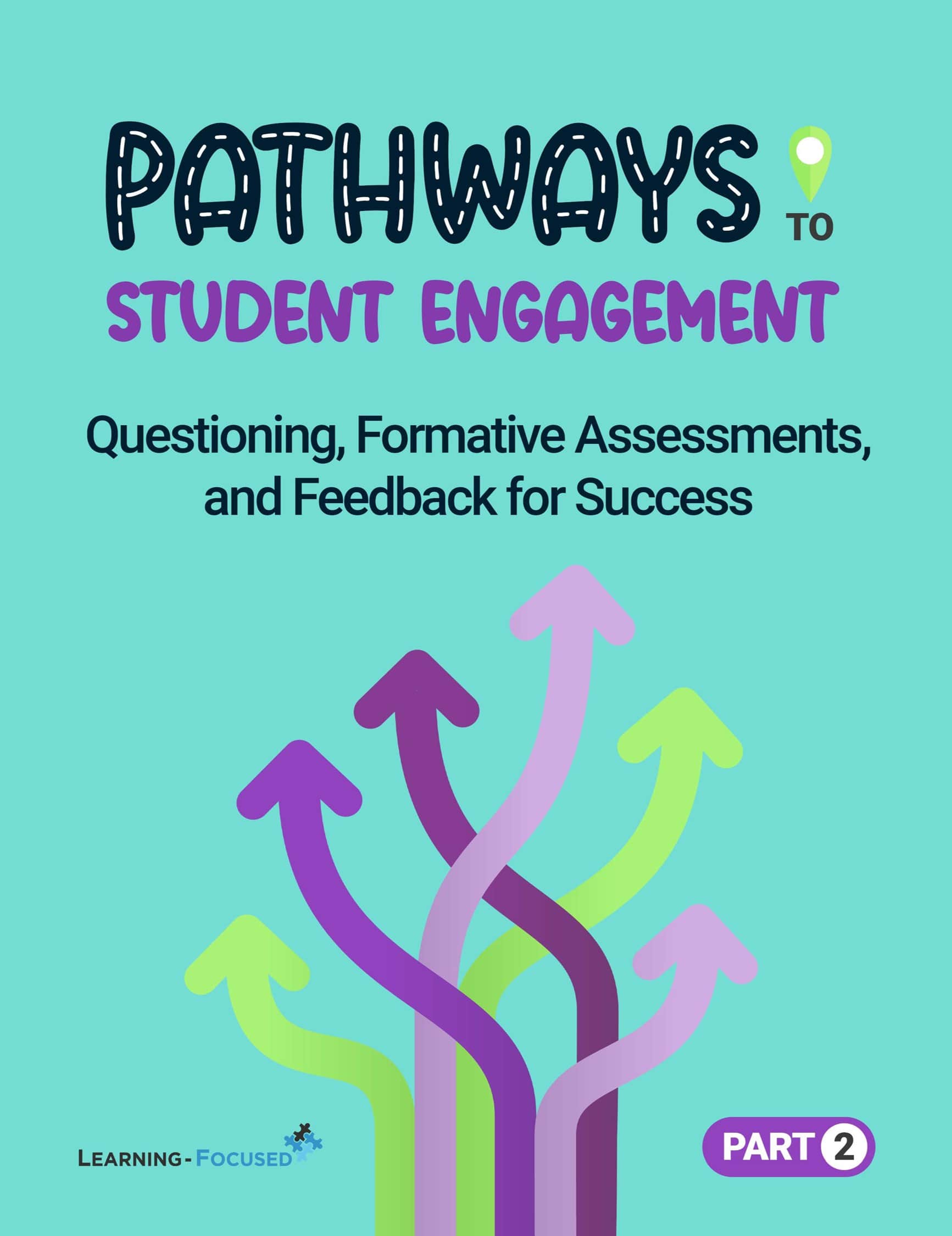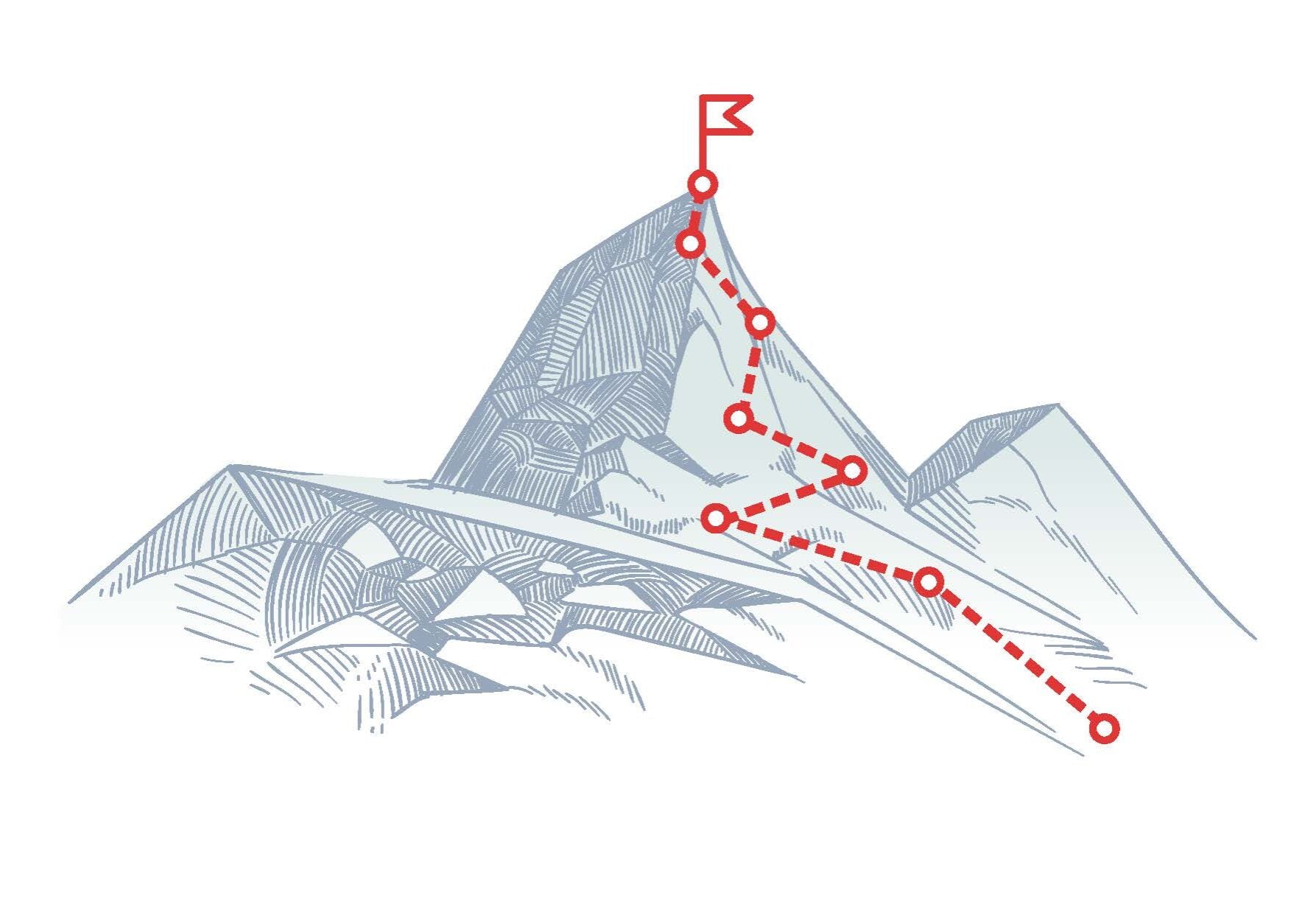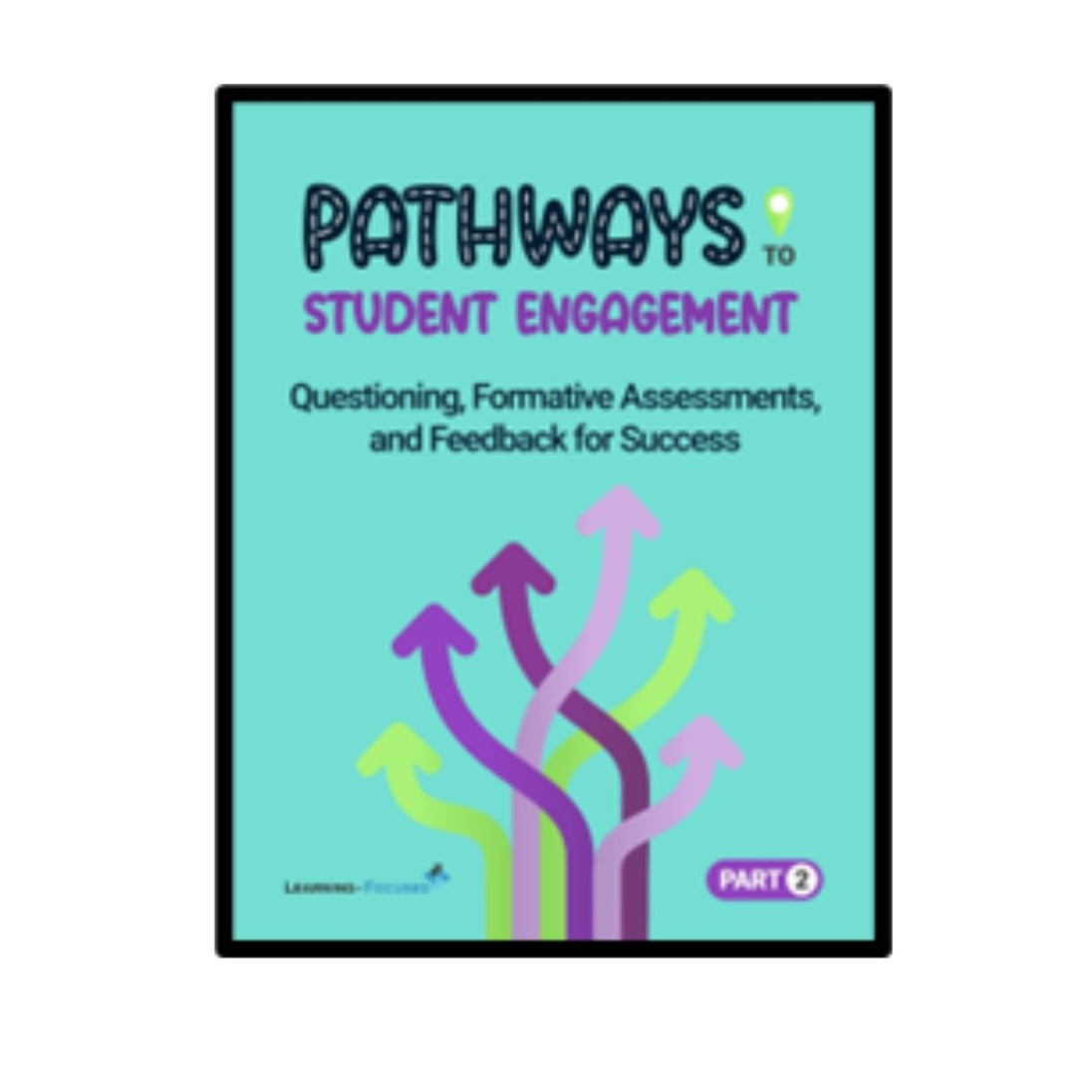
Pathways to Student Engagement
Part 2: Effective Questioning, Formative Assessment, and Effective Feedback
Deepen Engagement with Questioning, Assessment, and Feedback

Student engagement doesn’t happen by chance—it’s the result of intentional instructional decisions. When teachers purposefully plan their questions, align formative assessments to clear learning goals, and provide timely, actionable feedback, students are more likely to stay engaged, build confidence, and experience success.
This professional learning highlights three powerful, research-based strategies:
Effective Questioning, Formative Assessment, and Effective Feedback.
These strategies not only foster a culture of thinking and reflection but also support students in taking ownership of their learning. When embedded into daily instruction, they work together to promote clarity, curiosity, and academic growth for all learners.
Let’s close the engagement gap by creating pathways that enrich and elevate teaching and empower students with the skills they need for academic success.

Pathways to Student Engagement Part 2: Questioning, Formative Assessments, & Feedback
Professional Development Opportunities
Professional Development Agenda
Pathways to Student Engagement Part 2: Questioning, Formative Assessments, & Feedback
Professional Development Agenda PDF
Course Syllabus
Pathways to Student Engagement Part 2: Questioning, Formative Assessments, & Feedback
Comprehensive Course Syllabus PDF

Buy the Pathways to Student Engagement Part 2: Effective Questioning, Formative Assessment, and Effective Feedback Book -
Student engagement is essential for deeper learning, but sustaining it requires intentional, research-based strategies. The Pathways to Student Engagement series provides practical strategies for transforming passive participation into active learning. Each book focuses on high-yield instructional strategies that foster collaboration, critical thinking, and meaningful interactions. From writing and discussion to questioning and vocabulary development, this series helps educators create dynamic, student-centered learning experiences that drive achievement. This series focuses on what the strategies are, and more importantly, why they are so incredibly powerful, enabling you to have much deeper knowledge for successfully adapting the strategies in your lessons and units.
In Pathways to Student Engagement: Questioning, Formative Assessments, and Feedback for Success (Part 2), learn to elevate student engagement with effective questioning techniques, formative assessments, and targeted feedback. This resource provides educators with research-based strategies to create dynamic learning environments where students actively think, respond, and refine their understanding. Learn how to use questioning to drive deeper thinking and leverage feedback to guide student success.
- Regular price
- $50.00
Frequently asked questions
How much is shipping?
Regular ground shipping, which arrives in 7-10 business days, is free. Yes, FREE!
However, if you need faster shipping for an additional charge, call 866-955-3276 to place your order.
Do you offer quantity discounts?
We offer quantity discounts up to 10% on materials when purchased for a school-wide or district-wide professional development
training that we are providing at your location or when using with a Learning-Focused Online course.
Contact us to request a discount.
What is your return policy?
Learning-Focused will accept returns of products within 30 days of receipt of shipment for a refund. Learning-Focused will accept
returns of products within 45 days of receipt of shipment for an exchange or store credit. To qualify for return or exchange, products
must be unused.
Call 866-95-LEARN to arrange the return for a refund or exchange. Products purchased that are made to order (Coaches Binders,
Monitoring Binders, Redelivery Notes) will not be accepted for exchange or refund. Defective products will be exchanged for the same product only.



